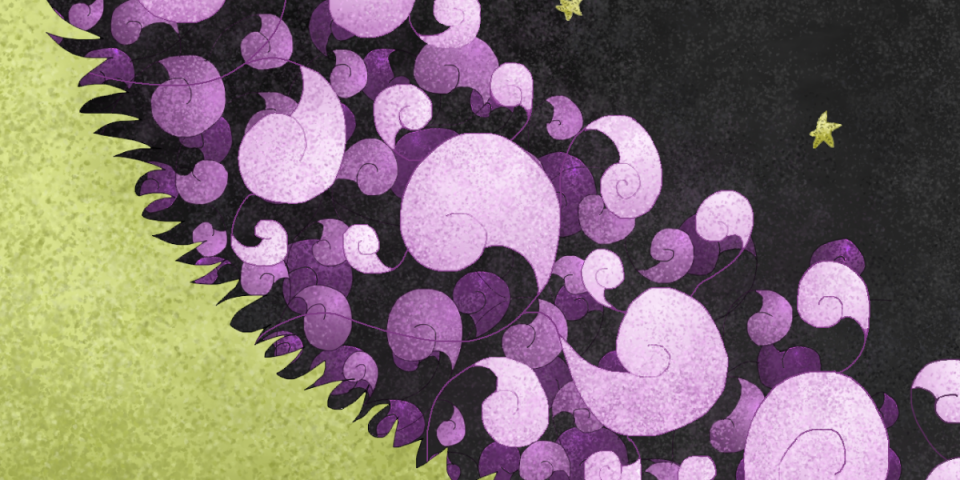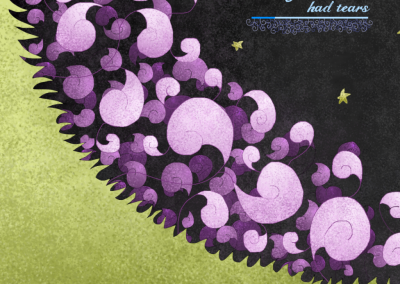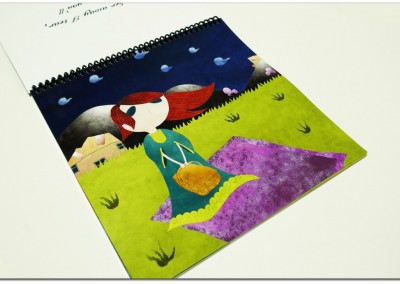What if Water had tears
This conceptual project is centered around a love story, published in a book format. A multi-layered story with many symbolic references to Water, this book will have readers turning and flipping the book back and forth several times as they seek to unravel the mystery of it, a process which reflects the state of a person’s retrospective thought process.
Introduction
The whole concept of this project is built upon a very natural human tendency – taking things for granted. A deeper study and understanding of water and its relationship to man shows that humans are inseparable from water. In June 1992, the Dublin Statement was commended to world leaders assembled at the United Nations Conference on Environment and Development (UNCED) held in Rio de Janeiro. One of the poignant guiding principles is:
Principle No. 2 – Water development and management should be based on a participatory approach, involving users, planners and policy-makers at all levels
Indeed, no one person can bring about global effects of water conservation policies. This requires the cumulation of efforts of every single person on this planet. Conversely, the cumulation of negligence on our part amounts to a rapid wastage of water.
Hence, I propose a deeper look into the problem of water wastage in the world.
Premise
The relationship between man and water is akin to that of a failing romantic relationship. According to Wolfram Mauser, author of “Water Resources”, humans progressed from being nomads to farmers, and finally city dwellers. At the very beginning, we had an intimate relationship with water. This is evident in many cultures across the globe, where water is deeply entrenched in traditions, practices, religions etc. As we progress, our use of water increases dramatically, so much so that we have abused the liberty which we have with in expending water resources. For example, the maintenance of a single golf course uses about 35 million gallons of water in a year on average.
Concept
When I asked myself the question, “What is going to motivate people to reduce water wastage?”, the answer is clearly not increasing tariffs or bills. Since the problem lies in the estranged relationship between man and water, I felt that the retrospective thought process is critical in reminding ourselves of the once cherished relationship. Hence, the goal was to produce a story which provokes and engages the reader in such a process.
“What if Water had tears” is a title I chose in order to capture the essence of the project in one sentence. Essentially a rhetoric question in itself, it also functions as a primer to a story world where Water is personified, becoming capable of emotions and feelings. This allows me to layer a romance story over the relationship between water and man.
Methodology
Using a series of images to convey a story which will culminate in two different conclusions, depending on the direction the images are read. Visual cues are critical in hinting the reader that the story can be read in the opposite direction.
Medium – Book
A square format is chosen for this print collateral. It is unusual and becomes awkward for the reader to hold, but such a format also breaks away from the mold of most books (where the ratio of width to height is usually unequal). The book uses spiral binding at the top of the image rather than the side, giving the feel of how a calendar is handled. Full bleed printing is used to produce images without borders, and in this context, without boundaries.
The art direction and graphic style is chosen specifically to create an abstract world where reality is mingled with imagination. The characters in the book appear stiff in their poses, and the exaggerated size of the eyes gives a feeling that they are always staring into space – having eyes yet not seeing. It reflects the state of our societies where we are so caught up with progress that we become zombie-like in some cases, or even suffering from extreme tunnel vision perspective. Most of the colors used are desaturated in order to bring an out-of-the-world effect. The environment is also designed to have symbolic references to water, such as seaweeds growing out of the grass, starfishes in the night sky etc.
In one direction, the story tells of a typical boy-meets-girl romance tale which ends in a happy ending. In the other, it recounts of how a boy grows increasingly close to the girl, eventually neglecting and taking for granted her presence in order to pursue his own dreams. The final image in this direction shows the boy sleeping on the grass, a reference to death.
At the back of each image is also a a line or several lines of text. This is the third storyline which is parallel to the backward direction of the story, placed in a sequence from front to back. Written in poetry form, it uses heavy symbolic vocabulary (relating to water) in order to reveal the true message which is hidden beneath the layers.
Summary:
1. Front to back – Typical love story with a happy ending
2. Back to front – A tragic romantic story with a sad ending
3. Front to back (poem) – Another tragic romance tale
If it is not already clear by now, the way the images and text are placed in sequence are such that it forces the reader to flip and turn the book back and forth repeatedly, searching and digging for the true meaning behind the many layers of the book.
Medium – Website
The website’s purpose is to produce a presence on the internet where more people can learn about the book. It follows the concept of the book in the way the user interface is designed – the navigation is animated to go either left or right, surveying the entire landscape view of the world in the story.
Medium – Bookmark
Designed as a souvenir which is given with the purchase of the book, it departs from the poetic and dreamy style of the other two mediums by delivering an interactive experience which results in the revelation of a fact about water wastage. At first glance, the bookmark shows a leaking tap with a cork at the bottom. Upon pushing the cork up which sits firmly into the tap opening, a paragraph containing water statistics and a website URL is revealed. Ideally, this website would be a concurrent or at least a regular water conversation campaign supported by the government.
Teaching Faculty
DV3000 – Visual Communication III
Graphic design, Website
Art, Design & Media Library
26 March 2015
29 April 2017
Copyright. All rights reserved.
Share















